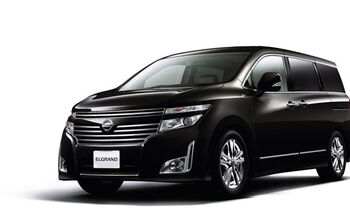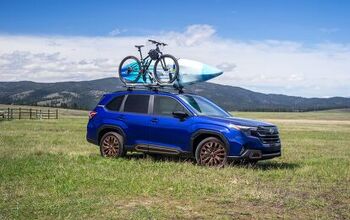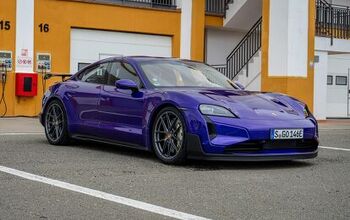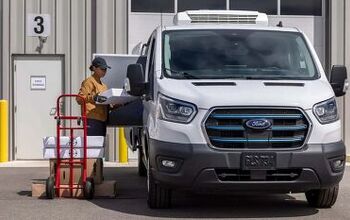2011 Nissan Quest Review

It would seem that Nissan and Honda need to switch marketing departments. The all-new 2011 Nissan Quest minivan is being billed as the family hauler that ‘gets’ parenting more than any other. Arguably, however, it’s Honda’s Odyssey that includes the most unique parent-oriented features – and lots of them. To keep the ironic twist going, Honda bills its van as the most attractive vehicle in the segment to your adventurous right brain, and yet it’s the Quest that’s easily the most exciting to look at.
FAST FACTS
| 1. After a brief one-year hiatus, the Quest is back competing in the minivan segment with a dramatically new look. |
| 2. Unlike many competitors, the Quest comes standard with keyless access and a push-button ignition. |
| 3. It shares the same turning radius as the Altima, making it easy to maneuver. |
| 4. A 3.5L V6 makes 260-hp and delivers a claimed 19/24-mpg. |
| 5. Pricing ranges from $27,750 to $41,350. |
PLENTY OF SWAGGER IN THIS WAGON
Nissan has taken Toyota’s ‘Swagger Wagon’ a step further, with a box-on wheels that brings to mind the Mercedes Viano – a sort of executive van offered briefly in Europe. Pick a dark color like the purply Black Amethyst and the chrome trim pops. While the previous Quest would have been lucky to even attend an automotive beauty contest, let alone compete, this new 2011 model is a stand-out in its class with a slight urban vibe that will have you perusing a DUB catalog so you can toss on a set of 20s. (22s if they’ll fit)
Park this thing in your driveway and the neighbors will talk. “What is that thing?” “Where did he get it?” they’ll whisper. “That’s pretty sick… for a van,” their kids will say.
HIGH-GRADE TRIM LEVELS GIVE LUXURY FEEL
Inside, there’s a strong continuation of the luxury vibe, or at least there is if you opt for the higher-trim SL or LE models. That’s quite likely, as Japanese minivans tend to attract shoppers willing to spend a little extra and so the more expensive trims have become the volume sellers.
Both SL and LE versions were available to test (no cloth-interior versions were), and we can say the van delivers a positive and premium impression, although it does depend on the color of leather. Gray leather seats give a rather drab feel to the cabin, whereas the light tan leather contrasts with the black dash top and faux-wood for a true luxury look.
Compared to some of the rivals (Honda in particular) there’s a notable absence of dash clutter. Simple audio and climate controls sit on the center stack, topped by an LCD screen on most models with a familiar knob and buttons to operate through the menus. Top trim LE versions get an 8-inch screen with Navigation, while middling SV and SL get a 4.3-inch unit (with rear-view monitor) that’s certain to make the cabin look even more sparse.
Unlike the Odyssey there aren’t storage innovations galore, just a simple center console with two cup holders, plus two more that pop out of the lower section of the dash. Do you need more than this? Honda would say yes, and while they might come in handy the odd time, we don’t often find ourselves drinking more than two Grandes from ‘Buckies at a time.
INNOVATIVE ONE-TOUCH POWER SLIDING DOORS
A key feature that’s included on all but the base trim level are power sliding second row doors that open or close with the touch of your finger (or knuckle if your hands are full of grocery bags). The doors can also be opened or closed using buttons on the dash to the left of the driver, or with the key fob. That fob even allows keyless access to the front doors, plus there’s a push-button ignition so you never have to reach for your keys. We commend Nissan for making this standard and can’t stress how much other minivan makers should do the same.
What isn’t standard, on the Quest or any other minivan for that matter, is a blind-spot warning system. Considering the size of these glorified school buses, it should be at least optional, although Nissan only offers it on the top-trim SL, where it’s standard. We’re at least thankful the Quest has mirrors large enough for an ensuite bathroom.
Hop into the second row and you’re greeted by two captain’s chairs, plus there’s a three-seat bench in the back. Second row room is plentiful, although the 3rd row is just sufficient for adults. Unfortunately, sunshades for the back two rows come standard on LE models only.
Nissan has lowered the 2nd row step-in height to make ingress and egress easier, but we couldn’t help but notice the hard plastic step has an open space underneath for the sliding door mechanism. It seems sturdy enough, but just looks flimsy, and one has to wonder how it will hold up to 10 years of repeated thuds from a three-pack of obese siblings.
CARGO ROOM LACKING, OR IS IT?
Vans need to be able to haul stuff as much as people and the Quest takes a bit of a different approach. Rather than traditional 3rd row seats that drop into the rear well, the Quest maintains that space for a constant total of 37.1 cubic feet out back. The third row then folds forward for a total of 63.6 cu-ft, and you can drop the 2nd row seatbacks to expand that to 108.4 cu-ft. Two sturdy flaps can cover the cargo well behind the third row, which is perfect for either hiding items below or for making one long flat bed in the rear. Total volume isn’t near what rivals offer, but for many those massive expanses only come when you remove seats, which Nissan product experts insist no one ever does.
If you opt for the top LE trim the third row seats are power operated. We expected a system similar to the Infiniti QX56, but thankfully these ones don’t take as much time to fold down or pop up. Also of note is the rear liftgate (power on the top two trims), which opens high enough for a 6-footer to walk underneath.
DRIVING THE BUS
When it comes to minivans, what you get is really more important than how it drives. That being said, the Quest is both comfortable, quiet and reasonably car-like, feeling smaller to drive than its cube van dimensions would have you guess. Particularly impressive is that it shares the same turning circle as the Altima sedan, meaning pulling a U-ey is a cinch.
Power is solid at 260-hp and 250 lb-ft, although again, it’s not all that important and give or take 20-hp isn’t going to matter at all in this segment. The CVT automatic transmission is smooth and we found ourselves reluctant fans.
Fuel economy of 19/24-mpg is as good as the 4-cylinder Sienna, although the V6 Sienna is nearly identical at 18/24. All models in this class fall well short of the Odyssey’s 19/28-mpg high and our brief time behind the wheel of the Quest turned out some unimpressive numbers with a brutal average of just 18.5-mpg.
Another drawback we discovered was the windshield washer jets that hit only the bottom third of the window, limiting visibility at times. A small issue perhaps, but one that ultimately involves the safety of all involved.
The Quest does get one surprising convenience/safety feature; a tire pressure monitoring system with Easy Fill Tire Alert, which notifies you with a beep of the car’s horn when the tires are at the ideal pressure.
MODELS AND PRICING
Starting at a competitive $27,750 the Quest S gets 16-inch wheels, Nissan’s Intelligent Key, a four-speaker audio system and the usual power options including a 6-way power driver’s seat. Upgrade to the SV ($30,900) and add in aluminum wheels, Tri-Zone climate control, a 4.3-inch audio display, USB and iPod connectivity, Bluetooth with steering wheel controls, a backup camera and a leather wrapped steering wheel. Quest SL ($34,350) models bring full leather with 18-inch wheels, a power liftgate, heated front seats, auto on/off headlights, a quick-release fold flat 3rd row and more. Top of the range is the LE ($41,350), adding navigation, a 13-speaker audio system, a 4-way power passenger seat, 8-inch in-dash display screen, blind spot warning, HID headlights, and a DVD entertainment system with wireless headphones.
THE VERDICT
Marketing departments are paid to come up with slogans and to create a story about a car, and often rather than working with what they’re given (even when what they’re given is pretty good), attempt to twist the facts and force a message. This is one of those cases.
Overall the Quest seems to be missing some of the really innovative features that sets the Odyssey apart from the crowd, although that’s not to say it’s without its virtues, like the power touch doors and keyless access. It has, however, out-Sienna’d the Sienna with more swagger than a limping Jay Z. From the point of view of practicality and functionality, the Quest doesn’t reinvent the minivan but it does do the basics right, with style.
RELATED READING
2011 Toyota Sienna: First Drive
2011 Honda Odyssey Review – First Drive
2011 Dodge Grand Caravan Review
2009 Ford Flex Review
LOVE IT
- One-touch power sliding doors and keyless access
- Tight turning circle makes big van more manageable
- Original design
LEAVE IT
- Poor as-tested fuel economy
- Lousy windshield squirters
- Little in the way of breakthrough innovations

With AutoGuide from its launch, Colum previously acted as Editor-in-Chief of Modified Luxury & Exotics magazine where he became a certifiable car snob driving supercars like the Koenigsegg CCX and racing down the autobahn in anything over 500 hp. He has won numerous automotive journalism awards including the Best Video Journalism Award in 2014 and 2015 from the Automotive Journalists Association of Canada (AJAC). Colum founded Geared Content Studios, VerticalScope's in-house branded content division and works to find ways to integrate brands organically into content.
More by Colum Wood































Comments
Join the conversation